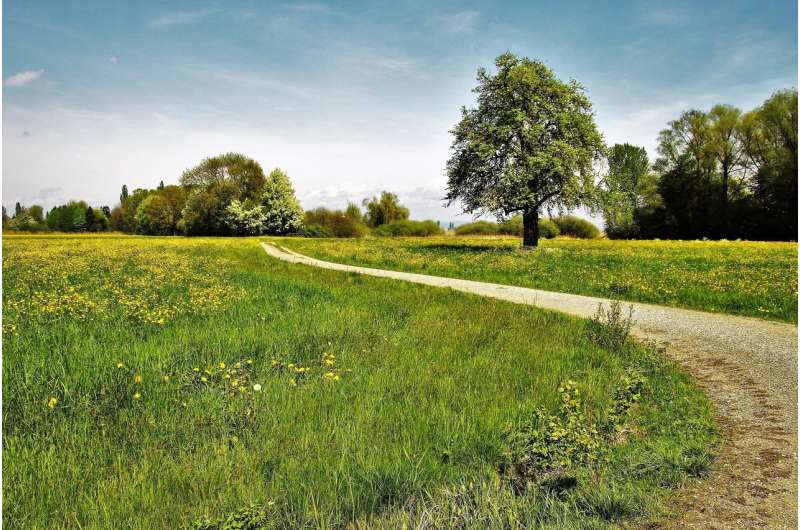Credit: CC0 Public Domain
An international team of researchers has found evidence that suggests women who live their lives surrounded by greenspace experience less severe premenstrual syndrome (PMS) symptoms than women who do not. In their paper published in the journal Environment International, the group describes their study that involved surveying women living in Norway and Sweden and what they learned from studying the replies.
PMS is an emotional and physical medical condition that is experienced by many women leading up to their period. Prior research has suggested that it is related to changes in the levels of hormones—symptoms include: tender breasts, bloating, food craving, mood swings, changes in libido, sleep problems, anxiety, headaches, skin spots, oily hair and tiredness. In this new effort, the researchers wondered if the environment a woman is living in may have an impact on the degree of symptoms related to PMS she experiences—they note that prior studies have shown that reductions in stress levels may help. They also note that other prior studies have shown that living near green spaces such as large yards, gardens or parks can lower stress levels.
The work by the team involved surveying over 1000 women between the ages of 18 and 49, who lived in parts of Norway and Sweden. In the surveys, the women were asked about their lifestyle, health habits, where they lived and the symptoms they experienced during PMS events.
In looking at their data, the researchers found a link between the level or degree of PMS symptoms and living environment—specifically, those women who spent most of their lives living near green spaces reported experiencing a lower degree of some symptoms of PMS—less depression, reduced anxiety fewer sleeping problems, less breast tenderness and less abdominal bloating. They noted that living short-term in such an environment did not seem to have an impact—the women had to live near green spaces for most of their lives to reap its benefits. The researchers were not able to find anything in their data to explain the benefits they saw but because most of the improvements were psychological, suggest that they are likely due to reductions in stress that come about from living in such places.
More information: Kai Triebner et al, Lifelong exposure to residential greenspace and the premenstrual syndrome: A population-based study of Northern European women, Environment International (2021). DOI: 10.1016/j.envint.2021.106975
Journal information: Environment International
© 2021 Science X Network
























